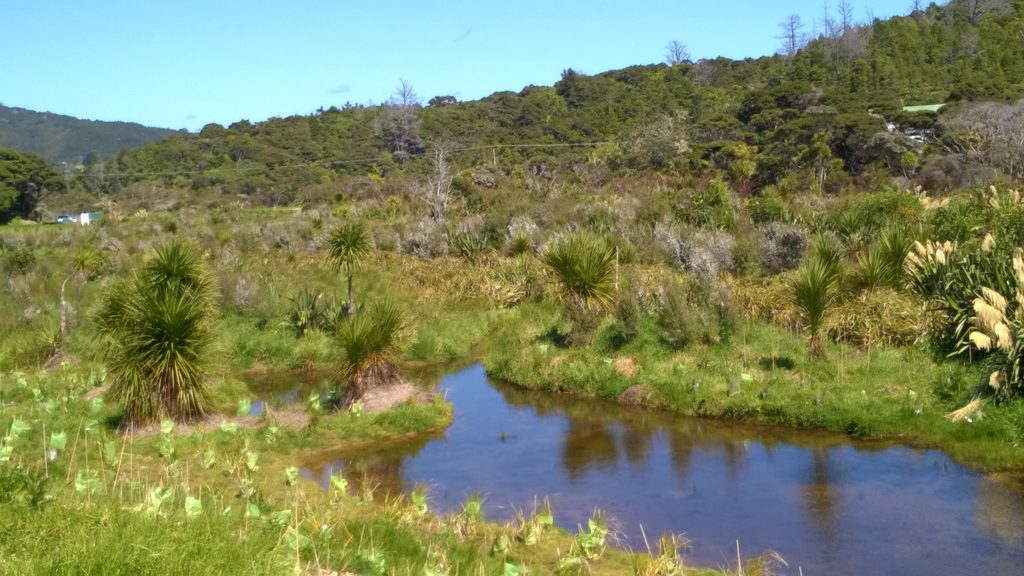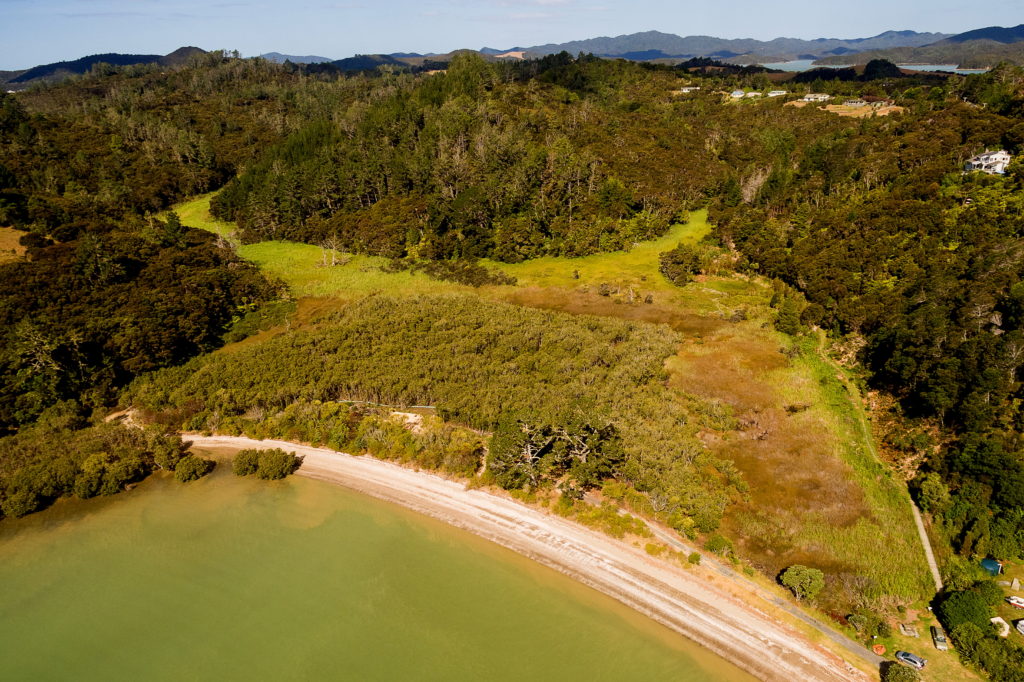Overview
Most accessible lowland and coastal environments have been considerably modified by human activities. In many parts of lowland and coastal New Zealand little of the truly natural environment remains. Today the main way to bring back natural ecosystems to many coastal and lowland environments is through active ecological restoration. Ecological restoration can take many forms depending on the environment type and the components that need to be restored. Ecological restoration projects can be an important way to engage communities in conservation. For example the comprehensive ecological restoration project for Tiritiri Matangi Island, in the Huaraki Gulf (LINK to: http://www.tiritirimatangi.org.nz/habitat ) has helped many Auckland residents to become more engaged in conservation.
There are some obvious limitations to ecological restoration. It is not possible to restore extinct species. Often it will not be possible to restore some species because of the large amount of resources or special conditions needed to ensure the long-term survival of those species in the restored area. The restricted availability of some threatened species means that they can only be re-introduced to the highest priority and best protected restoration sites.
Ecological restoration can take place at a variety of scales and intensity. There are marine, freshwater and terrestrial ecological restoration projects. Some require active involvement for only a few years while others require an ongoing action over many years.
Marine and freshwater ecosystems
Most nearshore marine environments have been significantly affected by fishing. A restoration tool to address the impacts of both the removal of biota and the damaging impacts of some bulk fishing methods is preventing the human harvesting of native marine biota within a specified area. As a result the larger predators typically targeted by fishers have improved survival and are able to grow larger. This can led to a rebalancing within the different marine trophic levels. An example of this rebalancing is the restoration of kelp forests to areas that have been modified by heavy sea urchin browsing. This can happen once urchin predators have increased in number and size and are better able to control urchin numbers. Such changes are an example of a trophic cascade of effects. While controls on bulk fishing methods may be sufficient to prevent damage to sensitive seabed structure this would be a protection rather than a restoration tool. Once sensitive seabed structures have been damaged by heavy trawling equipment it would take very many years for the damaged seabed biota to recover, if they even could.
Many near-shore and estuarine habitats have been significantly altered by extra sediment and/or nutrients resulting from human activities in their catchments. The extra sediment and nutrients are typically delivered by rivers and streams which are also damaged. Effective restoration can be very complex requiring a catchment-specific mix of land use modification, fencing and other stock management tools, planting, sediment capture devices, effluent treatment, restoring natural drainage patterns, floodplain function restoration, return of more natural flow regimes, and structure removal. Another component of restoration can be the removal or control of invasive plant and animal species. Examples include the removal of the Japanese kelp wakame (Undaria) from highly valued marine habitats; and the removal of pest fish species and new incursions of invasive plants from specific lakes.
Many aquatic restoration projects have focused on freshwater wetlands. Often restoration involves some return of natural flow patterns and ponding; and the removal or modification of drainage structures. Some wetlands have a high degree of weed invasion, especially where drainage has been modified. The removal of weed species and replanting with native species are typically important parts of wetland restoration projects. In some cases restoration activities include ongoing invasive predator control and the reintroduction of vulnerable or threatened native wildlife species.
Terrestrial ecosystems
In New Zealand many terrestrial ecological restoration projects include intensive ongoing invasive predator control to facilitate the recovery of native bird and insect species. There are an increasing number of islands and well defended patches of mainland where the goal is to achieve and maintain a pest-free animal status.
Other restoration activities include planting native plants. This can be as enrichment planting in young native-dominant vegetation so as to speed up successional processes. More often planting takes place in areas with little native cover and so the goal is usually to get a native cover as quickly as possible. A significant component of many terrestrial ecosystem restoration projects is the removal or at least control of invasive plant pest species. This can be a resource intensive component of restoration projects near settlements and along transportation corridors. Weed problems are likely to increase as more alien species become naturalised [Link to Definition] in New Zealand.
Pacific Eco-Logic Project examples
Pacific Eco-Logic has been involved throughout the ecological restoration process for a variety of projects/environments. This has included (not necessary all for each project) initial survey, planning with stakeholders, design, implementation, monitoring and evaluation. Much/Some of this work has been undertaken pro bono for local community groups and includes project co-ordination and management; fund raising; and working with and managing other volunteers. Examples of projects follow:
Tangatapu floodplain and eroding hillside ecological restoration project

Re-established ponds and plantings, Tangatapu floodplain ecological restoration project
This project is located at the base of the Brett Peninsula in eastern Northland, New Zealand. The main goals for the project have been to:
- Restore what was rough boggy floodplain pasture grazed by horses, to a natural wetland mosaic with ponds and natural meander-channels, kahikatea dominant swamp forest and a native shrub-sedge-flax wetland
- Restore eroding hill slopes dominated by rough pasture grasses to a hill slope dominated by mixed native forest
- Improve habitat quality for a range of native wildlife species
- Recreate suitable habitat for pateke (brown teal) so that they will recolonise the floodplain or a successful application can be made for re-introduction
Pacific Eco-Logic prepared the restoration plan in consultation with the relevant stakeholders. Chris Richmond led much of the detailed design work and supervision, especially that relating to the re-establishment of the natural meander patterns and shallow ponds. The Pacific Eco-Logic directors have been actively involved in the design of the planting programme as well as its implementation as well as the maintenance of those plantings (especially in the first few years of the project). Others organised the fencing and animal pest control. Pateke have reintroduced themselves.
Restoring the condition of the ecological sequences in the Pipiroa-Te Wahapu catchments
This project is on the Russell Peninsula, Northland. The main goals are to:
- Protect and restore the values of the core primary forest in Pipiroa and Te Wahapu Scenic Reserves;
- Restore the condition of the natural ecological sequences for the Pipiroa and Te Wahapu catchments (hillside and valley floor forest→ freshwater wetland→ saltmarsh→ mangrove forest and shrubland→ sand and shell barrier spits→ intertidal sand and mudflats
- Improve native wildlife habitat quality-this includes a programme to reduce animal pest numbers
- Provide a quality education/interpretation programme for the local community and the many users of the walkway that travels through these catchments

Pipiroa coastal wetland and its watershed in 2017. (Dean Wright Photography)
The initial focus for works restoring the condition of the ecological sequences has been the two scenic reserves, Pipiroa Recreation Reserve (wetland) and the 400m access-way alongside the Pipiroa Recreation Reserve to the Pipiroa Scenic Reserve. Pest plant removal is ongoing, although many of the forest canopy weed species have been removed. The first planting took place during the winter of 2016.
So far Pacific Eco-Logic pro bono contributions have included developing the overall proposal, preparing the restoration plan for the public lands, obtaining funding, undertaking community awareness raising, co-ordinating contractors and volunteers, organising the planting programme and follow-up management.
Identifying restoration priorities and evaluating outcomes
Pacific Eco-Logic has identified the terrestrial and aquatic coastal environment restoration priorities for several New Zealand regions (e.g. Northland). We have also used quantitative methodology developed by Victoria Froude to measure progress to ecological restoration goals that seek environmental naturalness for a variety of ecological restoration projects involving terrestrial and aquatic ecosystems.
Examples of Publications
Please see the “ecological restoration” heading in the Publications page.
